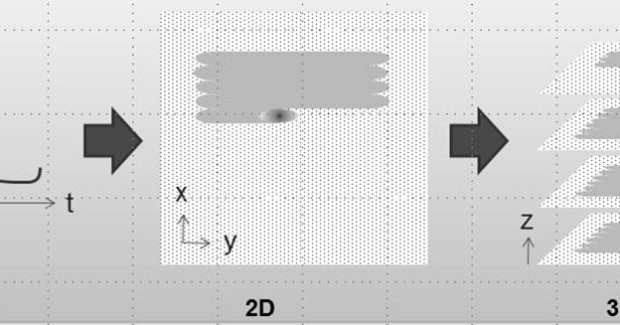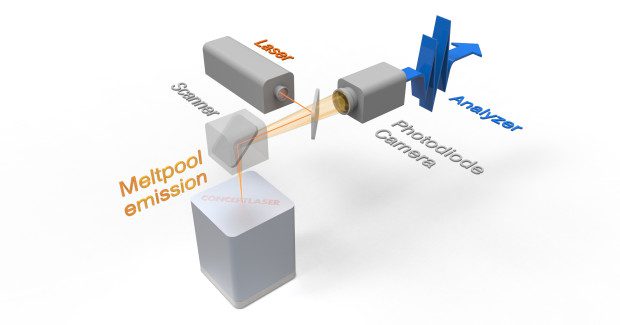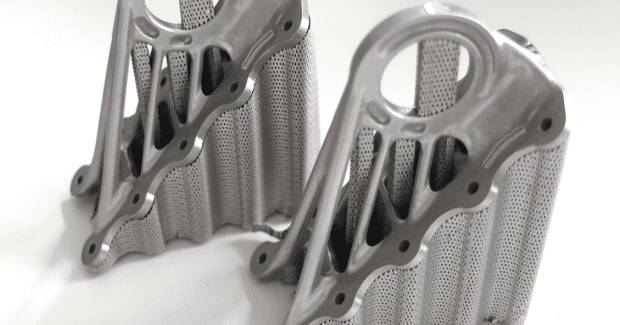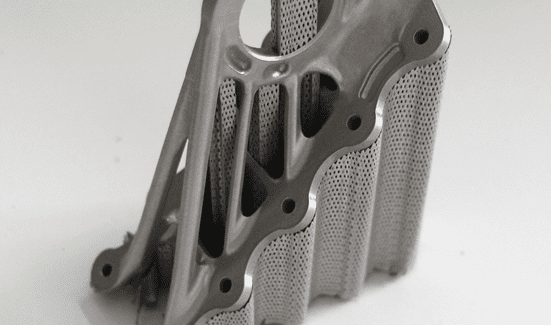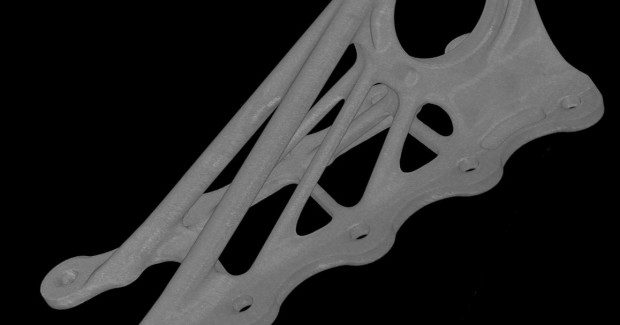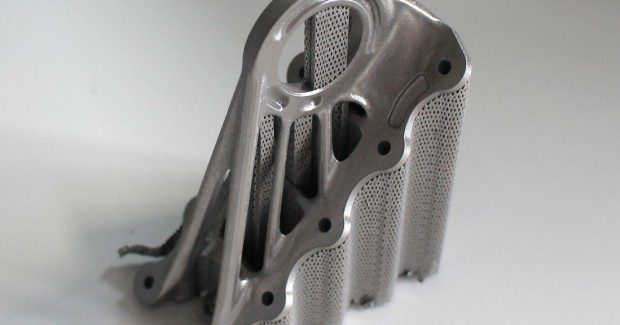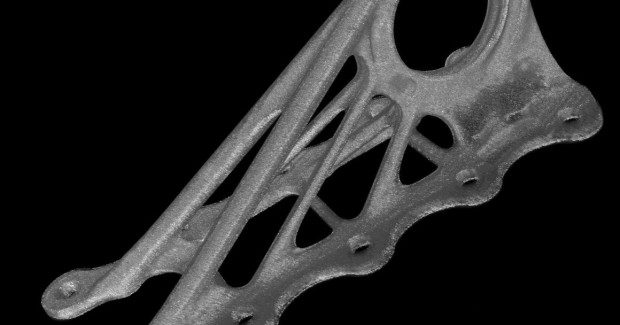Metal Additive Manufacturing Meets Quality Assurance
Quality assurance and in-process monitoring are essential to move additive manufacturing from making prototypes into first-class shop production. Here’s how it works.
Posted: February 26, 2016
Quality assurance and in-process monitoring have become the latest buzz-words in additive manufacturing/3D metal printing. We often hear people refer to “monitoring” the process casually. There is nothing casual about having real-time analysis of the build process. Quality assurance and in-process monitoring are essential to move additive manufacturing from the prototype phase into first-class production. Active quality assurance is one of the most important requirements of additive production users. Monitoring the key data of a laser melting system includes a number of variables including oxygen level, laser output, recoating and powder quality among other criteria. However, a comprehensive statement about the quality of the part cannot be made simply on the basis of the machine parameters. The process itself must be monitored.
Over eight years ago, Concept Laser founder Frank Herzog began work on melt pool monitoring and analysis in conjunction with the LaserCUSING® process. The core sensors were identified and first software solutions were developed to provide real-time data collection. Managing, processing this emission data and correlating it to X/Y positions on the build plate was a large task a few years ago and is still an ongoing process. Thanks to the ever-increasing capabilities of processing power, process understanding and technical know-how, we have now entered into the latest generation of this tool: the QMmeltpool 3D system.
Using Herzog’s patented in-situ process monitoring architecture, this system monitors the entire build process using a photodiode and CMOS camera. The melt pool is sampled at very high rates by using a coaxial sensor configuration. Looking directly through the laser optics, QMmeltpool 3D monitors the build process with great fidelity and produces a 3D model of the entire build process in a format with similar resolution as a CT scan. Varying the threshold lets users parse the 3D model for variables in the process and verify the process.
The QMmeltpool 3D system uses coaxial sensors to detect melt pool emissions that are created during the LaserCUSING process in the form radiation. The coaxial structure allows the user to view a very focused region of interest with a high local resolution and rapid scanning rates (up to 50 kHz, depending on the detector type). Melt pool monitoring identifies two characteristic parameters: the melt pool area and melt pool intensity. These characteristic parameters can be allocated to corresponding process errors. For example, a low melt pool intensity may indicate inadequate laser output or an excessively high scanning speed, e.g., insufficient energy input. Moreover, changes in the area of the melt pool may indicate a variation in the oxygen content within the process chamber. The part geometry also has effects on the thermal conditions in the process, which means that reference samples and a high level of process understanding are required for the variation in data during the process to be interpreted and analyzed correctly.
https://youtu.be/4w918mQPA80
The QMmeltpool 3D system delivers position-related signals for definitive results comparable to computer tomography (CT) (see Figure 1). These signals make it possible to generate 3D datasets of the part or its structure. A highly accurate 3D landscape of the part is thus created. In detail, this means identifying characteristic properties of the melt pool. These include the area and intensity of the melt pool that can be investigated using two detectors, a camera and a photodiode, with a high-resolution level in terms of location and timing. Following that, these signals are correlated with the corresponding positional data of the laser. This comparison is what makes QMmeltpool 3D so ingenious: melt pools signals, such as melt pool area and melt pool intensity, can be visualized and evaluated in three-dimensions directly after the build process has finished. The user can trace the process of creating each part in terms of position. Local effects in the part during the build process can now be detected and analyzed better.
This approach is based on expanding the 2D inspection into the 3D space with coordinate-related data acquisition of the melt pool values. It is possible to look at current quality assurance approaches available on the market to assess the new method of QMmeltpool 3D. Classic off-axis inspections have a lower resolution and lower detection rate. For example, an infrared-sensitive camera is used and located in a position outside the build chamber. The advantage of this ex-situ solution is that the system integration of the machine and camera system is rendered straightforward. An off-axis structure enables statements to be made about the overall fusing and cooling behavior. However, it is not possible to derive a detailed statement about the melt pool.
The on-axis/in-situ structure is based on a two axial arrangement of detectors (see Figure 2). The detectors used are a camera and a photodiode which use the same optic as the laser. This coaxial integration permits a high coordinate-related 3D resolution of 35 µm. The detection rate results from the scanning speed. If it is 1,000 mm/s, the result is 66 µm, i.e., the distance covered by each shot by the camera detector. At 2,000 mm/s, the value is 130 µm by the camera detector. Concept Laser specifies the sampling rate of the camera as 15 Hz and 50 kHz for the photodiode. The coaxial arrangement offers the advantage of the melt pool emissions always being focused on one point of the detectors and the frame size being reduced so that the sampling rate can also be increased. As a result, a detailed analysis of the melt pool characteristics is possible.
Defects that occur during laser melting are due to an extremely wide range of influencing factors, including the scanning speed or laser output (see Figure 3). Process defects, for example, can be caused by scanning speeds that are too low or too high, having the effect of excessive or inadequate energy input. Inadequate energy input into the powder bed, for instance, leads to unmelted powder in the form of irregularly shaped pores. If the energy input is too high, on the other hand, this can give rise to gas inclusions that are revealed as regular, round pores in micrographs. The process gas flow, the material and many other factors can also influence the process and part quality. In-situ monitoring systems can detect process characteristics in real time thanks to their high resolution and sampling rates (every 0.1 mm, depending on the scanning speed) (see Figures 4a, 4b and 5a, 5b). In-situ monitoring systems thus make a significant contribution to detecting process defects at an early stage and avoiding them in future. For the user, this represents a tool for optimizing the process.
In the future, QMmeltpool 3D should help to minimize post-process quality assurance and to exploit time benefits. This monitoring system can help to supply local indications of defects in the part. As a result, subsequent inspections and tests can be reduced to a minimum. Furthermore, the data is available directly after the build process, resulting in savings in the amount of time taken. QMmeltpool 3D is unable to rectify defects during the build process. Due to the large number of influencing factors that can cause defects in the build process or on the component itself, and the highly dynamic properties of the process, developing a self-correcting control loop represents a significant challenge.
The practical added value of three-dimensional visualization with QMmeltpool 3D is not just that it is an original way of providing active quality assurance. In production and process development, component jobs can be optimized through iterative variation of the parameters. Support structures can be adapted and, above all, the design of the part can be structured in a more efficient and production-friendly manner.



